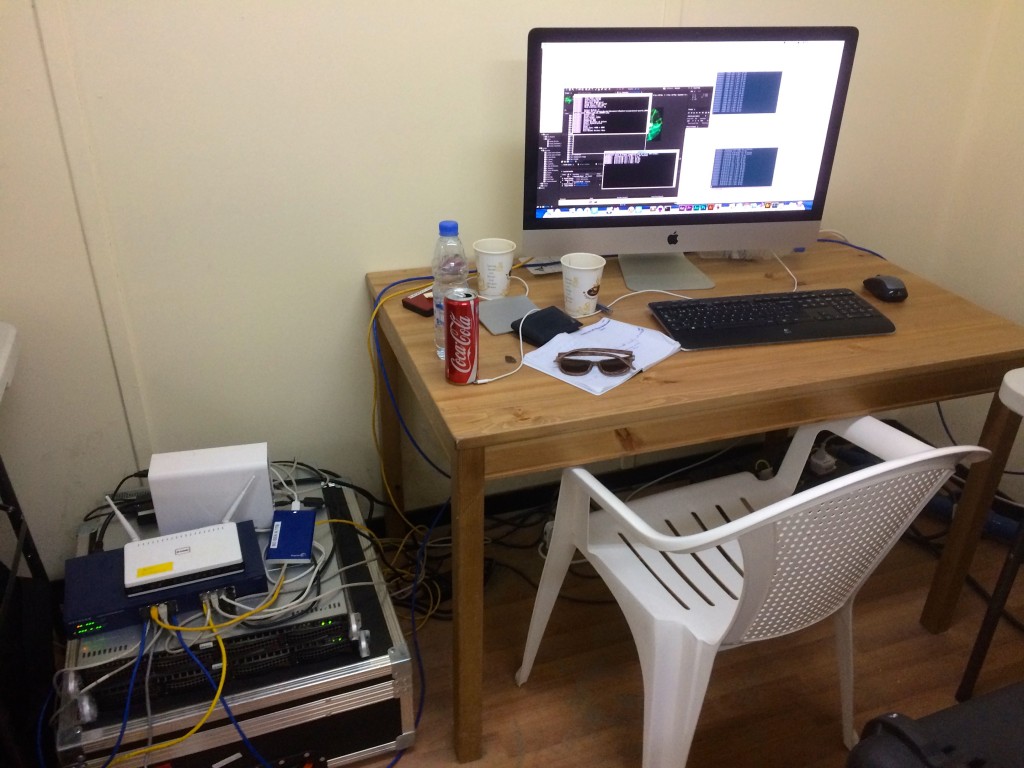Animating in the Middle East with Blackout Design
In October of 2014 I started working freelance for Blackout Design, a visual environment design company. I’ve had the chance to work, along with many other talented designers and animators on two very interesting projects, which both had their share of compelling challenges. The first project was the design and animation of a visual environment for the final episode of Stars Of Science, a popular show in Qatar. The other was then opening show for the Dubai International Parachuting Championship. A month of work in, I was told I would have the chance to go onsite to help set up the projects.
Stars of Science
We had to prepare a couple of videos that would represent the different inventions developed by the contender of Stars Of Science. They would be played along with acrobatic performances. The clips would be simultaneously played on a main led screen, projected on structures on each side and on the floor.
We worked day and nights for about two weeks on this project from a room in the beautiful hotel La Cigale.
This was a fun project in which we had to be able to make quick changes but yet making sure the render times would stay reasonable. We had the chance to experience with different style of motion design and animation in order to fit with the various invention styles. We played around with Plexus and Trapcode Particular a lot since they can quickly give a lot of depth to a scene. We also made worked on some matte paintings such as this one, since 3D was oftentimes too long to render.
Dubaï Internationnal Championship
The Dubaï International Championship was somewhat of a bigger beast to tackle. There were hundreds of people working on the site and there were a seven animators instead of two.
The show being a 360º projection and a round ceiling projection, we faced a couple of technical challenges. First, the sizes of the scenes were pretty big to say the least (12288px : 847px for the 360º and 4480px : 4480px for the ceiling).

The hours were long and the stress was high but all in all that was a very fun ride.
What I’ve learned
- Everybody loves motion blur and lens blur, but they double/triple render times.
- I would have never patched a render. As in, taking your render and adding some effects, fixes, etc. on top of it. It’s a bad practice if you want to keep your files clean and organized. But, when a single second of the show takes around 4 hours to render, you just have to make some concessions and do whatever it takes.
- When rendering such huge frames, After Effects does not seem to harness all the power the machine has to render the frame. We’d notice that our computers would take minutes to render a single frame, but would only use a fraction of the processor’s power. To fix it? Just make your machine a render farm (kinda). Setup your render queue to render an image sequence in a specific folder with Skip existing frames checked, and just start a bunch of render using Bg Renderer or the After Effects command line renderer. We would oftentimes have 3-4 simultaneous renders going on on our render machines.


